Hey all! Yangzera here again in another article on this strategy series about learning LoR Strategy: Tempo
If you haven’t already, make sure you read the first article as I’ll be trying to make this one a continuation of the previous.
While doing research on which topic to cover, I stumbled upon a word that really intrigues a lot of people and always causes a lot of discussion, tempo. Funnily enough, Tempo is the Brazilian Portuguese translation for “time”, and for someone who speaks Portuguese it can be super easy to sort of define what would tempo mean for a card game, broadly speaking.
It is no different in Legends of Runeterra – tempo can be defined as however much “time” you have ahead of your opponent.
Any play you make in a turn has an amount of tempo attached into it. As weird as it may sound, it’s easier to grasp this concept if you consider every play you make to be a tempo play, and then analyze after if your play was a high tempo or low tempo play.
The amount of tempo you generate will allow you to apply a proportional amount of pressure to your opponent, with said pressure being able to be converted into board presence or face damage.
The more tempo you gain, the more reactive you can be. While this idea can be weird, since you need to be proactive to gain tempo, any tempo gained in a turn can be converted into reactivity on a later turn, when you have enough pressure that your opponent has to make the first move.This gives you a clear advantage.


A good example of this relationship between tempo and reactivity is when you play Zap Sprayfin while piloting Pirate Aggro. Your deck works at enormously high tempo on turns one through four, and you apply so much pressure into your opponent that when you play Zap, even though your opponent knows you’ve drawn Noxian Fervor
while piloting Pirate Aggro. Your deck works at enormously high tempo on turns one through four, and you apply so much pressure into your opponent that when you play Zap, even though your opponent knows you’ve drawn Noxian Fervor off of it, they more often than not have to make the first move and try to remove one of your units, even though they know there is a Fervor in your hand.
off of it, they more often than not have to make the first move and try to remove one of your units, even though they know there is a Fervor in your hand.


Another good example of this situation is when you attach Yuumi onto any unit with Fated – Saga Seeker
onto any unit with Fated – Saga Seeker for example. The unit will continue growing endlessly, and the tempo gained from its trades will convert itself into pressure, eventually putting your opponent on the backfoot and demanding an answer from them, to which you will have more ways to react in future turns, when you have access to more and more mana.
for example. The unit will continue growing endlessly, and the tempo gained from its trades will convert itself into pressure, eventually putting your opponent on the backfoot and demanding an answer from them, to which you will have more ways to react in future turns, when you have access to more and more mana.
That same pressure will oftentimes translate into card advantage, as you’ll be able to make your opponent waste multiple cards to deal with one, setting you up for a better late game as well.
Different Ways To Gain Tempo
What makes tempo in LoR specifically so unique?
One may say, nothing, as tempo in LoR can be related to tempo in any other card game – but to that I say, no!
Legends of Runeterra, in all of its uniqueness and beauty, has different approaches for tempo, and different kinds of tempo are present in a match.
Board Tempo
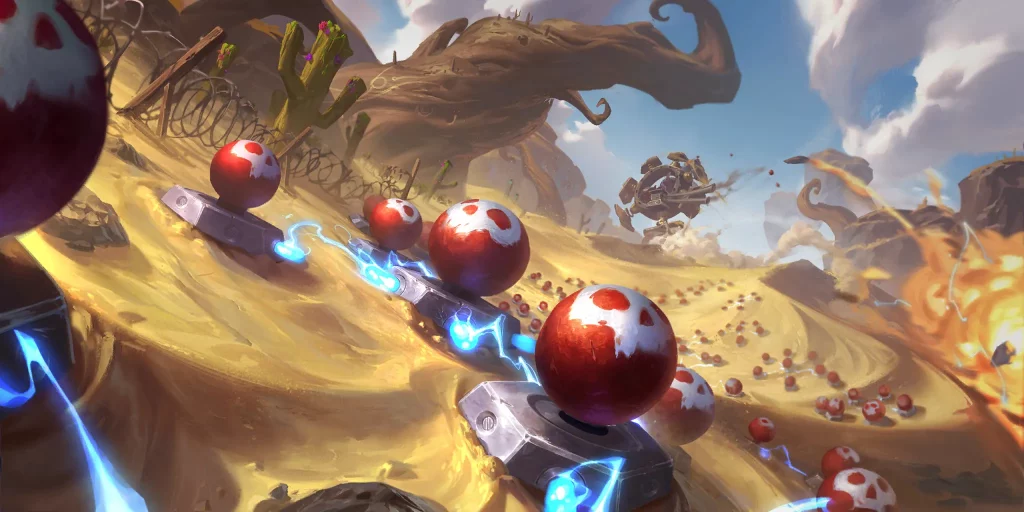
Due to LoR's combat-centric nature and the way attacking and blocking works, simply having more units than your opponent makes you able to hit for more face damage, or allows you to block every attack from the opponent while keeping units alive.
Let’s call this superior board presence board tempo for this article.
Board tempo is something almost all aggro decks play for, seeking to maximize on one- and two-drops to quickly develop a bigger board than their opponent.


 .
.
Once their initial plays for tempo get outclassed by bigger decks, Aggro decks convert the board tempo they gain in the early turns into face damage, which will later lead to their eventual win through direct damage ("burn") via spells like Decimate s and Noxian Fervor
s and Noxian Fervor s, and units like Imperial Demolitionist
s, and units like Imperial Demolitionist s.
s.
Board tempo is also present in many Demacian archetypes as it is a very board-centric region that will play for advantages on the board. As a region, Demacia seeks to convert this board tempo into face damage, and eventually into a win.
Mana Tempo

Closest to board tempo, we have the very easy to understand Mana tempo. Mana tempo is something most decks and archetypes will play for. Some decks do this in their own special way, like Deep discounting multiple Sea Monsters or Curious Shellfolk decks cheating mana with Trinket Trade
decks cheating mana with Trinket Trade s and Otterpus
s and Otterpus es, but it can still be related to mana.
es, but it can still be related to mana.
One thing I noticed when I started playing card games like LoR and eventually a little bit of Hearthstone, is that every card, every aspect, every effect has a mana cost attached to it.
There is what is called “the vanilla statline” for a mana cost, and cards pay their effect’s cost in stats or in mana cost. A “vanilla unit” is also usually used to refer to cards that lack an effect or ability.
Let’s look at a few examples and considerations:
- “Vanilla statline” is defined as a card having total stats equal to their mana cost times two, plus one. For example, Loyal Badgerbear
 has vanilla stats at a three mana 3/4.
has vanilla stats at a three mana 3/4. - “Premium vanilla statline” is defined as a card having total stats equal to their mana cost plus one, times two, for example, pre-nerf Loyal Badgerbear
 had premium vanilla stats at a three-mana 4/4
had premium vanilla stats at a three-mana 4/4 - Champions are oftentimes an exception to this “rule” as they are the main focal point of the game and the cards you build your deck around.
- Cards with an effect pay the price for having their effect in lower stats, or higher mana cost.
- Cards with "vanilla statline" that also have an effect are generally very, very good, as long as their effect is strong enough or relevant for the current meta. For example, take pre-nerf 3/4 Vanguard Sergeant
 and Legion Veteran
and Legion Veteran as examples: Sergeant is a good vanilla card with a good effect, and Veteran is a good vanilla card with a mediocre effect.
as examples: Sergeant is a good vanilla card with a good effect, and Veteran is a good vanilla card with a mediocre effect. - You can look at cards and deduce how much you’re paying for an effect. For example, when you play Vulpine Wanderer
 , the cost of generating a Stance Swap
, the cost of generating a Stance Swap is one health point from a vanilla statline, and one health plus one attack point from a premium vanilla statline. You can also look at it from the angle that the cost of generating a Stance Swap
is one health point from a vanilla statline, and one health plus one attack point from a premium vanilla statline. You can also look at it from the angle that the cost of generating a Stance Swap is one mana, as Vulpine’s statline would be considered premium for a one mana unit.
is one mana, as Vulpine’s statline would be considered premium for a one mana unit.
Anything you play and do can be translated into mana tempo.
If your Screeching Dragon kills a Vekauran Vagabond
kills a Vekauran Vagabond and then picks off a Vekauran Bruiser
and then picks off a Vekauran Bruiser , you’ve exchanged your five mana for your opponent’s eight mana. While this is always a straight-up good exchange in mana, it can sometimes be considered a not-great exchange in value, since the Screeching Dragon
, you’ve exchanged your five mana for your opponent’s eight mana. While this is always a straight-up good exchange in mana, it can sometimes be considered a not-great exchange in value, since the Screeching Dragon can be used to pick off an Akshan
can be used to pick off an Akshan or Sivir
or Sivir , that even though cost less mana, are cards that will generate tempo for your opponent, so using your own tempo to deny your opponent’s tempo gain is a bigger advantage – pick your fights wisely!
, that even though cost less mana, are cards that will generate tempo for your opponent, so using your own tempo to deny your opponent’s tempo gain is a bigger advantage – pick your fights wisely!
Alternatively, you can force your opponents into making low-mana tempo plays, like using their Vengeance on a unit that costs less than five or six mana, giving you the opportunity to play your bigger units. Another example is to play a one-drop on turn six, inviting your opponent to cast The Ruination
on a unit that costs less than five or six mana, giving you the opportunity to play your bigger units. Another example is to play a one-drop on turn six, inviting your opponent to cast The Ruination if you’re able to pressure as much or even more damage once you re-develop on that same turn.
if you’re able to pressure as much or even more damage once you re-develop on that same turn.
Legends of Runeterra also has absolutely insane mana tempo plays, and you’re probably reading this wondering “Why did this dude not talk about Ravenous Flock yet?”
yet?”
Calm down, my friend, I’ve saved it for last. Let’s keep talking about mana a little bit more.
Let’s look at Mystic Shot as a “true neutral” mana tempo play in terms of damage and in my opinion, the card that defines the concept of using mana to deal direct damage. You’re paying two mana to deal two damage, which makes it a very basic rule that for every point of mana spent, you want to deal one damage.
as a “true neutral” mana tempo play in terms of damage and in my opinion, the card that defines the concept of using mana to deal direct damage. You’re paying two mana to deal two damage, which makes it a very basic rule that for every point of mana spent, you want to deal one damage.
To be more efficient at doing that, or to do more than that, there will be a requirement to be met or extra mana to be spent.
Let’s analyze cards like Calibrum , Get Excited!
, Get Excited! , Pokey Stick
, Pokey Stick and Decimate
and Decimate .
.




For Calibrum , the price you pay to deal three damage for two mana is its slow speed and the inability to aim it at your foe's face or at their Champions.
, the price you pay to deal three damage for two mana is its slow speed and the inability to aim it at your foe's face or at their Champions.
For Get Excited! , the price you pay for the ability to deal three damage to anything is having to discard one card.
, the price you pay for the ability to deal three damage to anything is having to discard one card.
For Pokey Stick , the price you pay to draw a card on top of dealing one damage, is one extra mana.
, the price you pay to draw a card on top of dealing one damage, is one extra mana.
For Decimate , the price you pay to deal such a big amount of face damage is one extra mana on top of its slow speed.
, the price you pay to deal such a big amount of face damage is one extra mana on top of its slow speed.

For Ravenous Flock , the price you pay to deal four damage for one mana isn’t just needing the enemy unit to be damaged or stunned, but also one full action. A full action setup is almost always the extra price you’re paying to cast Flock on a unit, which is a huge deal, because actions are also a form of tempo.
, the price you pay to deal four damage for one mana isn’t just needing the enemy unit to be damaged or stunned, but also one full action. A full action setup is almost always the extra price you’re paying to cast Flock on a unit, which is a huge deal, because actions are also a form of tempo.
Action Tempo
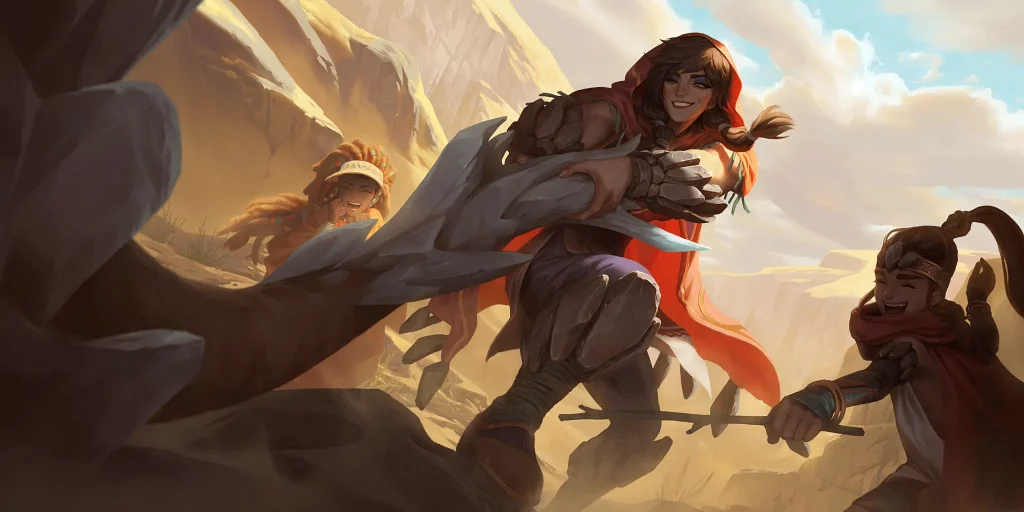
The back and forth nature of LoR, and the fact that every action allows your opponent to react, makes it so plays that “deal with two board slots at the same time” (more often than not dealing with an opposing unit while generating one of your own, or dealing with 2 units from either side of the board) are extremely high tempo.
The best examples of these plays are Leona , Arachnoid Sentry
, Arachnoid Sentry , Concussive Palm
, Concussive Palm and Tri-beam Improbulator
and Tri-beam Improbulator . These high action tempo plays are what allow the so called "tempo decks" to take out games other decks wouldn’t be able to.
. These high action tempo plays are what allow the so called "tempo decks" to take out games other decks wouldn’t be able to.
In my opinion, Caitlyn Ezreal
Ezreal Tri-beam is one of the decks that uses the many different kinds of tempo the most, having efficient units with good effects that allow efficient high-tempo swing turns that will generate enough on an advantage for the Tri-beam player for them to close the game out in a very quickly.
Tri-beam is one of the decks that uses the many different kinds of tempo the most, having efficient units with good effects that allow efficient high-tempo swing turns that will generate enough on an advantage for the Tri-beam player for them to close the game out in a very quickly.
High action tempo defensive plays like House Spider and Arachnoid Sentry
and Arachnoid Sentry , together with high action tempo offensive plays like the same Arachnoid Sentry
, together with high action tempo offensive plays like the same Arachnoid Sentry and Tri-beam Improbulator
and Tri-beam Improbulator are a good starting point for understanding this concept, and the more you play with this deck, the more you’ll see these different scenarios where you can turn an even game into a complete win by blowout.
are a good starting point for understanding this concept, and the more you play with this deck, the more you’ll see these different scenarios where you can turn an even game into a complete win by blowout.
Other good examples of high action tempo plays are Naturalist plays.



Using Desert Naturalist on a Sarcophagus
on a Sarcophagus or on a Hexplosive Minefield
or on a Hexplosive Minefield will be a triple development play in one action, and a big reason why the Taliyah
will be a triple development play in one action, and a big reason why the Taliyah Ziggs
Ziggs deck is known to operate at such a high tempo. Even though all three units are very vanilla and basically just stat sticks, the innate power of a triple development play is what makes it so good.
deck is known to operate at such a high tempo. Even though all three units are very vanilla and basically just stat sticks, the innate power of a triple development play is what makes it so good.
This is one of the reasons you will mostly only see Ravenous Flock succeed in decks that also have Arachnoid Sentry
succeed in decks that also have Arachnoid Sentry – while they are extremely good together, Arachnoid sentry is a high action tempo play that makes up for the low action tempo play that Flock demands, on top of being a very good mana tempo play, and the Sentry–Flock combo is a great starting point to any discussion that involves “tempo” in Legends of Runeterra: it’s two of the three types of tempo combined into a single play, that will more often than not also translate into the third, since it will deal with big units so efficiently and affect the board.
– while they are extremely good together, Arachnoid sentry is a high action tempo play that makes up for the low action tempo play that Flock demands, on top of being a very good mana tempo play, and the Sentry–Flock combo is a great starting point to any discussion that involves “tempo” in Legends of Runeterra: it’s two of the three types of tempo combined into a single play, that will more often than not also translate into the third, since it will deal with big units so efficiently and affect the board.
To me, Tempo as a concept in Legends of Runeterra transcends the classic “tempo is being in control of the game” definition – while this simple sentence is true on a surface level, being “in control” of a game is a much deeper concept than it looks, because you don’t need to be “in control” for the entire game in order to win it.
What you do need is to be “in control” of at least one action (or one priority, if you’ve read the first article of this series) to convert a game into a win.
So, to recap!
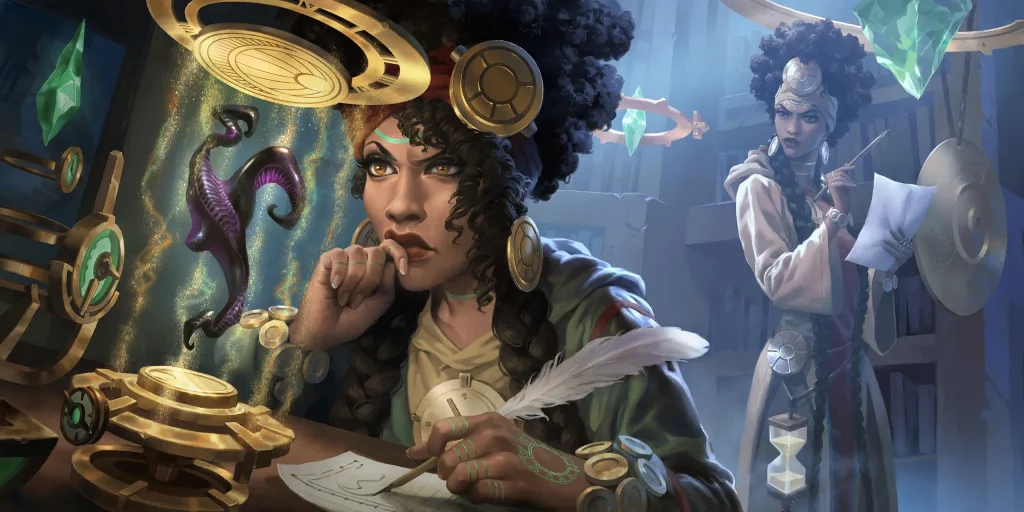
Board Tempo
Controlling the board, be it via favorable trades or just going bigger than your opponent, to eventually convert the board presence into a win, or going wide enough that your opponent can’t block all of your units and you’re converting the board advantage into face damage.
Mana Tempo
Doing mana-efficient plays, like using Calibrum on a three-health unit, or using Ravenous Flock
on a three-health unit, or using Ravenous Flock on Garen
on Garen after he gets hit by a Flashbomb Trap
after he gets hit by a Flashbomb Trap for example, or using your one-drops to trade evenly into the enemy two-drops, thus generating mana advantages.
for example, or using your one-drops to trade evenly into the enemy two-drops, thus generating mana advantages.
Action Tempo
Getting ahead of your opponent in actions to gain an immediate advantage, mostly tied to plays that act as a double development, like Tri-beam Improbulator , Arachnoid Sentry
, Arachnoid Sentry or Concussive Palm
or Concussive Palm .
.
Alright and that’s pretty much it for Tempo!
This was such an amazing topic to talk about and do research on because it is always something that will get people from all levels of play into a discussion.
I want to deeply thank everyone who vocalizes feedback on these articles I’m writing because they are the ones who help me do better. I also want to thank the amazing teammates I have in the Wobbly Wombats for discussing this topic with me while I was doing research for this week’s topics – I couldn’t have gotten this whole piece together without your insights.
As always thank you so much if you’ve made it this far and feel free to throw any feedback my way at Discord (Yang#4481) or Twitter (@yangzera), I’m also looking for topics to talk about in the next article, and would love some ideas.
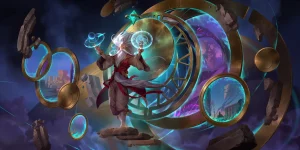


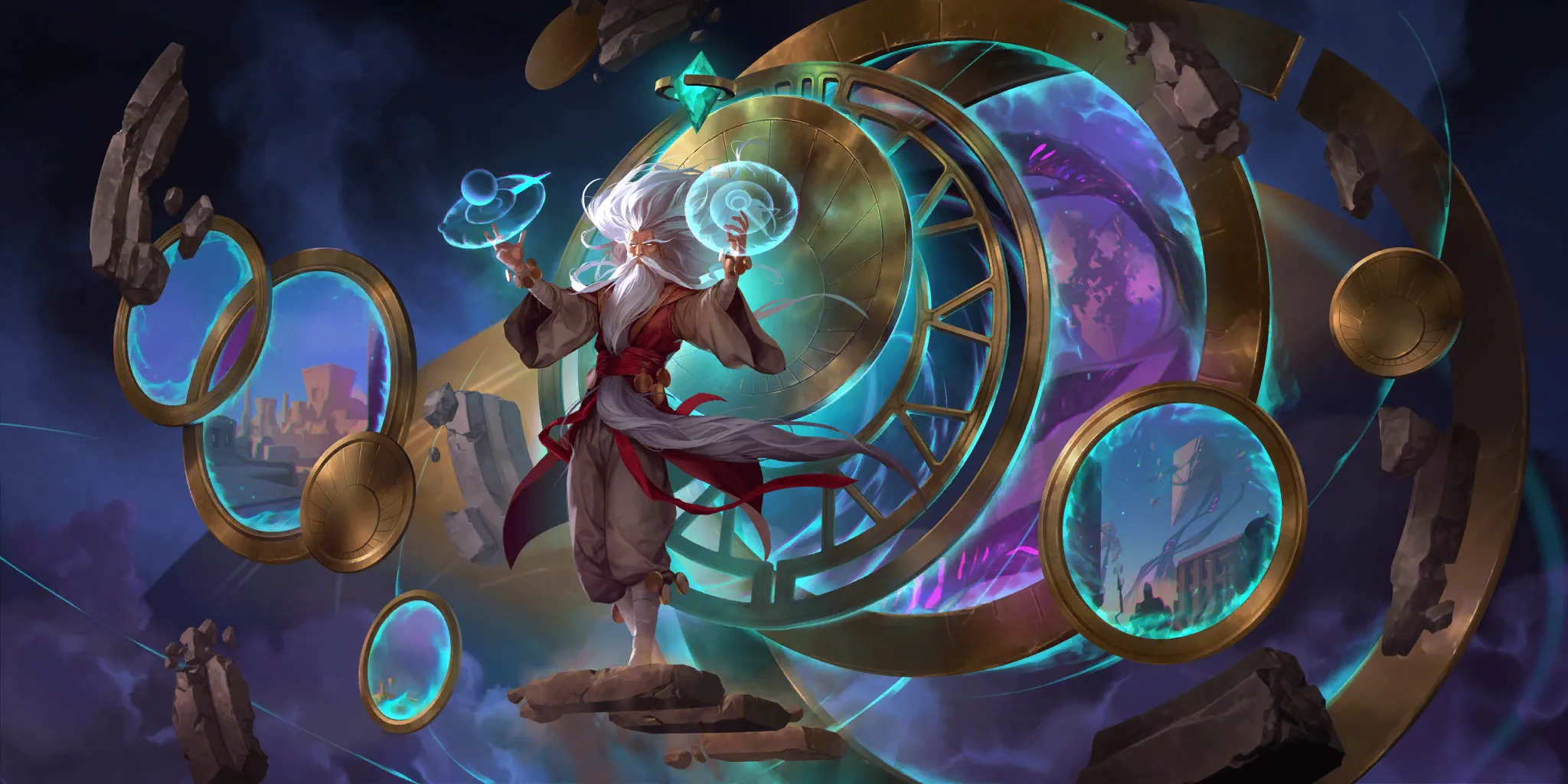
 has vanilla stats at a three mana 3/4.
has vanilla stats at a three mana 3/4. and Legion Veteran
and Legion Veteran as examples: Sergeant is a good vanilla card with a good effect, and Veteran is a good vanilla card with a mediocre effect.
as examples: Sergeant is a good vanilla card with a good effect, and Veteran is a good vanilla card with a mediocre effect. , the cost of generating a Stance Swap
, the cost of generating a Stance Swap is one health point from a vanilla statline, and one health plus one attack point from a premium vanilla statline. You can also look at it from the angle that the cost of generating a Stance Swap
is one health point from a vanilla statline, and one health plus one attack point from a premium vanilla statline. You can also look at it from the angle that the cost of generating a Stance Swap